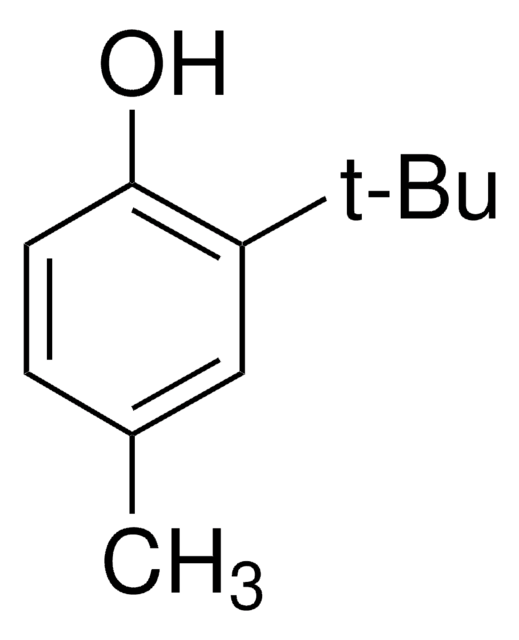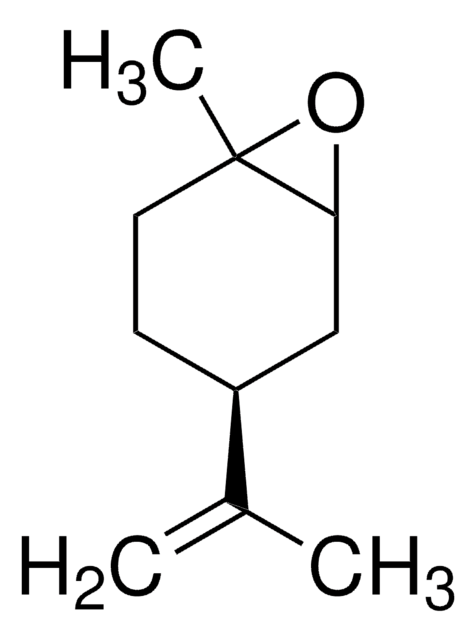C85751
p-Cresol
99%
Sinonimo/i:
4-Methylphenol
About This Item
Prodotti consigliati
Densità del vapore
3.72 (vs air)
Tensione di vapore
1 mmHg ( 20 °C)
Saggio
99%
Stato
(Liquid, Solid, or Crystalline Solid)
Temp. autoaccensione
1038 °F
Limite di esplosione
1 %
1.1 %, 150 °F
P. ebollizione
202 °C (lit.)
Punto di fusione
32-34 °C (lit.)
Densità
1.034 g/mL at 25 °C (lit.)
Stringa SMILE
Cc1ccc(O)cc1
InChI
1S/C7H8O/c1-6-2-4-7(8)5-3-6/h2-5,8H,1H3
IWDCLRJOBJJRNH-UHFFFAOYSA-N
Cerchi prodotti simili? Visita Guida al confronto tra prodotti
Descrizione generale
Applicazioni
- Detoxification of sewage sludge by natural attenuation and implications for its use as a fertilizer on agricultural soils.: This article discusses the role of p-Cresol in the detoxification processes of sewage sludge, considering its implications for safe agricultural use, addressing environmental and health concerns (Mazzeo DEC et al., 2016).
- Characterization of livestock odors using steel plates, solid-phase microextraction, and multidimensional gas chromatography-mass spectrometry-olfactometry.: This research characterizes the complex odors of livestock environments, highlighting the role of p-Cresol in odor profiles, which could help improve management practices and mitigate odor emissions (Bulliner EA et al., 2006).
Avvertenze
Danger
Indicazioni di pericolo
Classi di pericolo
Acute Tox. 3 Dermal - Acute Tox. 3 Oral - Aquatic Chronic 3 - Eye Dam. 1 - Skin Corr. 1B
Codice della classe di stoccaggio
6.1A - Combustible acute toxic Cat. 1 and 2 / very toxic hazardous materials
Classe di pericolosità dell'acqua (WGK)
WGK 2
Punto d’infiammabilità (°F)
186.8 °F - closed cup
Punto d’infiammabilità (°C)
86 °C - closed cup
Scegli una delle versioni più recenti:
Possiedi già questo prodotto?
I documenti relativi ai prodotti acquistati recentemente sono disponibili nell’Archivio dei documenti.
I clienti hanno visto anche
Il team dei nostri ricercatori vanta grande esperienza in tutte le aree della ricerca quali Life Science, scienza dei materiali, sintesi chimica, cromatografia, discipline analitiche, ecc..
Contatta l'Assistenza Tecnica.













